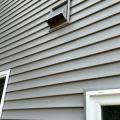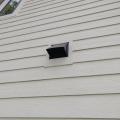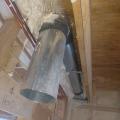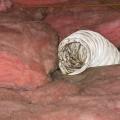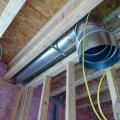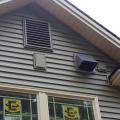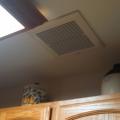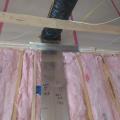Showing results 1 - 14 of 14
Right - The kitchen exhaust duct termination is integrated aesthetically and functionally with the exterior cladding; however, the opening should be screened to keep out pests.
Right - This kitchen exhaust duct termination is integrated aesthetically and functionally with the exterior cladding.
Right – a booster fan was installed in this long dryer duct to increase air flow and help prevent the duct from being clogged with lint
Right – This kitchen exhaust fan duct is made of smooth round steel duct that takes the shortest, most direct route to the outdoors and joints are sealed with mastic.
Wrong - Code requires a kitchen exhaust fan duct to be a smooth metal duct (galvanized steel, stainless steel, or copper) and to terminate outside, not in an attic or crawlspace.
Wrong - If this kitchen exhaust duct had been extended a few inches, at least one bend could have been eliminated.
Wrong - Kitchen exhaust ducts are prohibited from terminating within 3 feet of an operable window or near gable vents.
Wrong - Kitchen exhaust fans must be located directly over the stove top to be effective at capturing and removing cooking pollutants.
Wrong - The IRC prohibits the use of flex duct for kitchen exhaust and only permits PVC duct for downdraft systems that meet specific exceptions; also, gaps at the ceiling have not been air sealed.
Wrong - This kitchen exhaust duct uses flex duct, which is prohibited by code, and the duct’s 22-foot length and multiple bends will slow the movement of pollutants out of the home.
Wrong – Exhaust fan ducts must be smooth metal ducts; flex duct is not permitted by the IRC.
Wrong – The duct for this kitchen exhaust fan is made of flex duct instead of smooth metal duct and the duct is not properly supported.
Wrong – The kitchen exhaust fan duct is attached to flex duct, which is prohibited by code.
